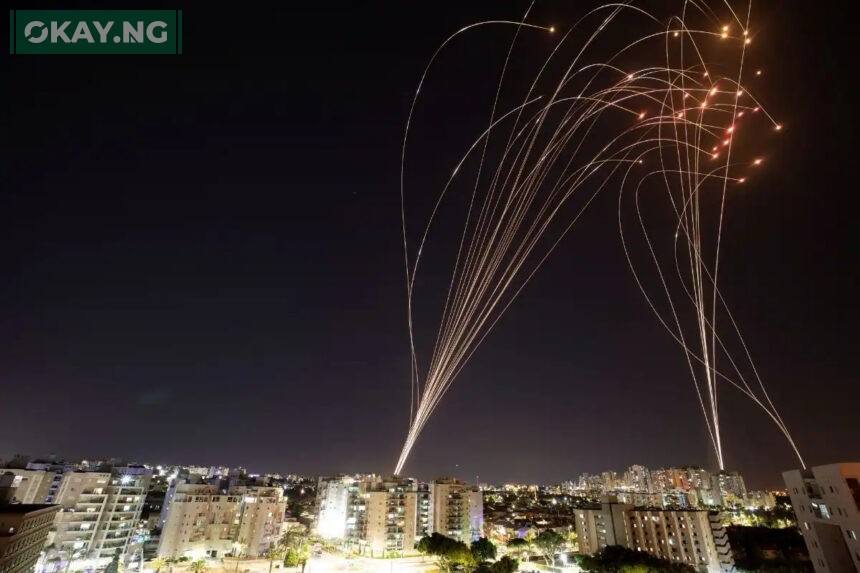Israel is a country that faces constant threats from its neighbors, especially from the militant groups Hamas and Hezbollah, who often fire rockets and missiles at Israeli cities and towns.
To protect its citizens from these attacks, Israel has developed a sophisticated air defense system called the Iron Dome.
The Iron Dome is a land-based system that intercepts and destroys short-range rockets and artillery shells fired from distances of 4 to 70 kilometers away and whose trajectory would take them to an Israeli populated area.
The system was developed by Rafael Advanced Defense Systems and Israel Aerospace Industries, with financial and technical support from the United States.
The system was first deployed in 2011, and since then it has become a mainstay of Israel’s defense, shooting down thousands of rockets launched from Gaza and Lebanon.
How does the Iron Dome work?
The Iron Dome consists of three main components: a radar unit, a control center, and a launcher. The radar unit detects an incoming rocket and relays information about its speed and trajectory to the control center. The control center’s computers calculate whether the rocket is going to hit a populated area. If so, a missile is fired from the launcher, which contains 20 interceptor missiles. Each interceptor missile receives constant guidance updates from the control center in its internal radar. The interceptor missile destroys the incoming rocket by exploding near it. The goal is to do this far away from populated areas, minimizing damage on the ground.
The Iron Dome can intercept rockets coming from any direction, and can handle multiple threats simultaneously. The system can also distinguish between rockets that are going to hit populated areas and those that are going to land in open fields or water, and only intercepts the former. This saves resources and reduces false alarms.
What are the advantages and limitations of the Iron Dome?
The Iron Dome has proven to be very effective in defending Israel from rocket attacks. According to Israeli officials, the system has intercepted over 90% of the rockets that would have hit populated areas. The system has also reduced casualties, injuries, and property damage caused by rocket attacks, as well as psychological stress and trauma among civilians. The system has also given Israel more time and flexibility to respond to the attacks, without resorting to large-scale military operations or ground invasions.
However, the Iron Dome also has some limitations. The system is not designed to intercept long-range missiles or drones, which require different types of defense systems. The system is also expensive to operate and maintain, costing about $50 million per battery and $100,000 to $150,000 per interception. The system also depends on the availability of interceptor missiles, which can run out if there is a large-scale or prolonged attack. Moreover, the system cannot guarantee 100% protection, as some rockets may evade or overwhelm the system, or cause collateral damage by their debris.
What are the future plans for the Iron Dome?
Israel plans to continue developing and improving the Iron Dome system, as well as integrating it with other defense systems. Israel hopes to increase the range of Iron Dome’s interceptions, from a maximum of 70 kilometers to 250 kilometers, and make it more versatile so that it can intercept rockets coming from two directions simultaneously. Israel also plans to deploy Iron Dome batteries at sea on Sa’ar 6-class corvettes, to protect offshore gas platforms in conjunction with Israel’s Barak 8 missile system.
The Iron Dome system has also attracted interest from other countries that face similar threats from rockets or missiles.
In 2020, the United States agreed to buy two Iron Dome batteries for its own use, as well as provide additional funding for Israel’s procurement of more batteries.
Other countries that have expressed interest in acquiring or cooperating on the Iron Dome system include Azerbaijan, India, Romania, South Korea, Vietnam, and NATO.
The Iron Dome defense system is a remarkable achievement of Israeli innovation and technology, as well as a testament to the strong alliance between Israel and the United States.
The system has saved countless lives and prevented countless tragedies by providing a shield against rockets. The system also serves as a deterrent against further aggression by Israel’s enemies, who know that their attacks will not go unpunished or unanswered.













